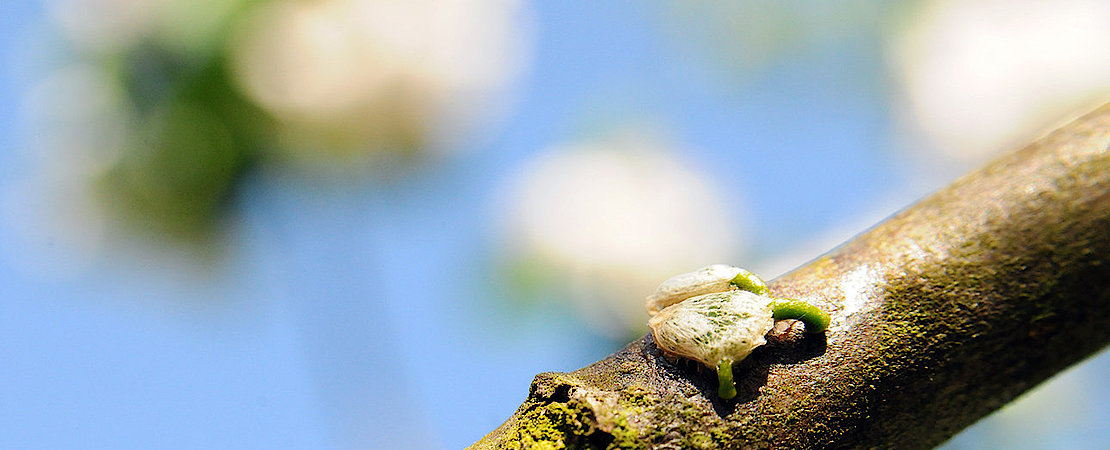Effects on the tumour process
The most remarkable properties of mistletoe extracts on the tumour process are their cytotoxic and growth-inhibiting effects, which they have on a large number of tumour cell lines, lymphocytes and fibroblasts in vitro.
The cytotoxic effects of mistletoe are mainly caused by the apoptosis-inducing mistletoe lectins, while the viscotoxins cause necrotic cell death [175].
In addition, mistletoe extracts lead to the increased formation or release of a number of cytokines such as interferon-gamma (IFN-γ), which plays an important role in mediating the protective immune response to cancer cells [234] and exhibits antiproliferative effects [238].
Last update: February 27th, 2023/AT1
Apoptosis
Mistletoe extracts and ML I induce apoptosis in tumour cells, leukaemia cells, lymphocytes, monocytes and granulocytes. Both the total extracts and ML I suppress cell proliferation significantly and dose-dependently [175, 223, 238].
Apoptosis-inducing effects have also been demonstrated for oleanolic acid and other pentacyclic triterpenes isolated from mistletoe such as betulinic and ursolic acid [192, 197].
The cellular mechanisms of apoptosis induced by mistletoe constituents have been investigated intensively, but have not yet been finally clarified. It is known that mistletoe lectins play a significant role in the induction of apoptosis, which they can trigger even at low doses [175, 202, 239].
Investigations show that apoptosis can also be induced by mitochondrial, receptor-independent signalling pathways (cytochrome c/Apaf 1) by activating the caspase cascade as an essential component of the signal path.
The interaction of mistletoe lectins with DNA is also discussed as a cause of apoptosis induction [223, 238]. In addition, mistletoe lectins can also indirectly induce apoptosis by increasing the expression of Fas ligands in lymphocytes, enabling them to induce programmed cell death in Fas target cells [239].
Last update: February 27th, 2023/AT1
Cytokine induction
Numerous investigations have been carried out on the induction of cytokines by single mistletoe lectins and also by isolated A and B chains. It has been shown that the incubation of mononuclear cells (PBMC) with ML I or isolated B chains leads to the release of TNF-α, IL-6, IL-1β but not of IL-1α. These results suggest a significant involvement of monocytes, since ML I binds preferentially to them [202, 240].
There are also numerous publications on cytokine induction by mistletoe extracts. For example, it has been shown that Iscador P in various concentrations triggers a partly strong release of IL-6 and TNF-α via the in vitro reactivity of mononuclear cells to mistletoe extracts. IL-2, IL-4, IL-5 and IFN-γ were induced significantly less frequently [241].
Another study showed that tumour inhibition caused by mistletoe extracts takes place via the release of IL-12, a mechanism which was influenced by the increase in T-cell and NK-cell activities [243].
A more recent study showed that IFN-γ, which plays an important role in mediating the protective immune response to cancer cells, is significantly increased in particular by oak mistletoe without altering the Treg subpopulations and the production of other T-cell cytokines such as IL-4, IL-13 and IL-17A. This selective increase in Th1 cytokines can be attributed to the immunomodulatory properties of mistletoe extracts [234].
Mistletoe induced cytokine production in vivo has been investigated mainly in tumour patients. This showed a high individual variability and differences in the induced cytokine patterns between the different lectins and depending on the composition of the different mistletoe preparations [202].
Last update: February 27th, 2023/AT1
Antiproliferative effects
Both total mistletoe extracts and ML I significantly inhibit cell proliferation in a dose-dependent way [175, 223, 239, 288]. Antiproliferative effects have also been demonstrated for oleanolic acid and other pentacyclic triterpenes isolated from mistletoe, such as betulinic and ursolic acid [192, 197]. Inhibition of cell proliferation was also observed in the equine cell line E42/02 [289].
Numerous investigations on various tumour cell lines also confirm that the use of mistletoe preparations does not increase cell proliferation. For example, the metabolic cell activity was investigated in 14 tumour cell lines with different concentrations of isolated ML I and total mistletoe extract. None of the examined cell lines showed a proliferative stimulus by ML I or the mistletoe extract [244]. Another investigation tested whether the three preparations Iscador M and Qu special and Iscador P exhibited growth-stimulating properties in 26 human cell lines in vitro. None of the cell lines showed growth stimulation by the three tested mistletoe extracts [59].
Last update: February27th, 2023/AT1
